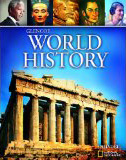
 The problem: Bookshare, “the world’s largest online library of accessible eBooks for people with print disabilities” has over 200,000 titles in its library. However, the information on content type, age ranges and available media forms was hidden in their database, only discoverable by the most skilled internet searchers, through Bookshare’s own website search, or API.
The problem: Bookshare, “the world’s largest online library of accessible eBooks for people with print disabilities” has over 200,000 titles in its library. However, the information on content type, age ranges and available media forms was hidden in their database, only discoverable by the most skilled internet searchers, through Bookshare’s own website search, or API.
The solution: By tagging this content with the draft accessibility metadata, a search engine can pick out the specific resources of each book, making this valuable accessible content discoverable.
Search for it yourself: We have a library of accessible content and a Google custom search engine available. The links below will execute searches so that you can see realtime results.
The background: Bookshare focuses on the challenge of access to reading materials for people with print disabilities. Bookshare’s goal is to raise the floor of access so that people with print disabilities can obtain a broad spectrum of print materials at the same time as everyone else. Bookshare is diligently working toward this goal by:
- Building the Bookshare digital library as rapidly as possible through Volunteers, partnerships, and publishers.
- Spreading the word so that everyone who is eligible to join Bookshare has the opportunity to do so.
- Expanding the choices of access technology available for people with print disabilities. Bookshare is leveraging new technological developments that make reading digital books easier.
How we did it: It was easy to scale this metadata conversion across all of Bookshare’s titles. These were database-generated web pages, so rather than requiring editorial work on each web page, the task was one of adding a few more tags or attributes around existing content. For example, for “World History Ancient Civilizations” above, elements like the title went from
<h1>World History: Ancient Civilizations</h1>
to
<h1 itemprop="name">World History: Ancient Civilizations</h1>
Other tags, such as
<meta itemprop="accessMode" content="textual"/> <meta itemprop="mediaFeature" content="structuralNavigation"/> <meta itemprop="mediaFeature" content="alternativeText"/>
were also added to tell the specific accessibility features of the book. More information on how to add accessibility metadata to your accessible content can be found on the resources page.
We have two example files:
 One is a commercial textbook, specifically licensed for people with print disabilities. It contains 555 “essential images,” (images, graphs or charts that are necessary for the full comprehension of the material) and 609 “described images,” (there is text or audio description of the image, graph or chart to aid students with print disabilities). This tenth-grade textbook is currently only available to public K-12 schools and organizations in the United States for use with students with an IEP, (Individualized Education Plan) because it was created from files supplied by the NIMAC under these restrictions.
One is a commercial textbook, specifically licensed for people with print disabilities. It contains 555 “essential images,” (images, graphs or charts that are necessary for the full comprehension of the material) and 609 “described images,” (there is text or audio description of the image, graph or chart to aid students with print disabilities). This tenth-grade textbook is currently only available to public K-12 schools and organizations in the United States for use with students with an IEP, (Individualized Education Plan) because it was created from files supplied by the NIMAC under these restrictions.
This content can be found at the Bookshare site, but is also archived here as a live example.
 Our second example is open source content. Open Educational Resources (OER) has content for a CK-12 Geometry Book, (student edition). You can access all of the electronic media for this without special license, but much of this content does not have long descriptions, potentially making it a less effective resource for students with print disabilities. This geometry textbook is, however, available in different formats, all downloadable from Bookshare. There are three versions: DAISY with images, DAISY with text only, and a Braille-ready Format (BRF) version.
Our second example is open source content. Open Educational Resources (OER) has content for a CK-12 Geometry Book, (student edition). You can access all of the electronic media for this without special license, but much of this content does not have long descriptions, potentially making it a less effective resource for students with print disabilities. This geometry textbook is, however, available in different formats, all downloadable from Bookshare. There are three versions: DAISY with images, DAISY with text only, and a Braille-ready Format (BRF) version.
This content can be found at the Bookshare site, but is also archived here as a live example, where the markup will exactly match this page, even as the Bookshare software advances.
Now let’s look at the pages and the summary from Google structured data testing tool. If you’ve come this far, you’ll care about the coding in context: do a “view source” of the tagged file in your tool of choice. The tags have “a11ymetadata” comments around them to make them easy to find.
- Original Source Page, at CK-12
- Daisy and BRF accessible formats, at Bookshare.org
- Accessibility Metadata-tagged version of Bookshare.org
- Google’s Structured Data Testing Tool output of the source document at CK-12
- Google’s Structured Data Testing Tool output of the accessibility metadata-tagged Bookshare.org